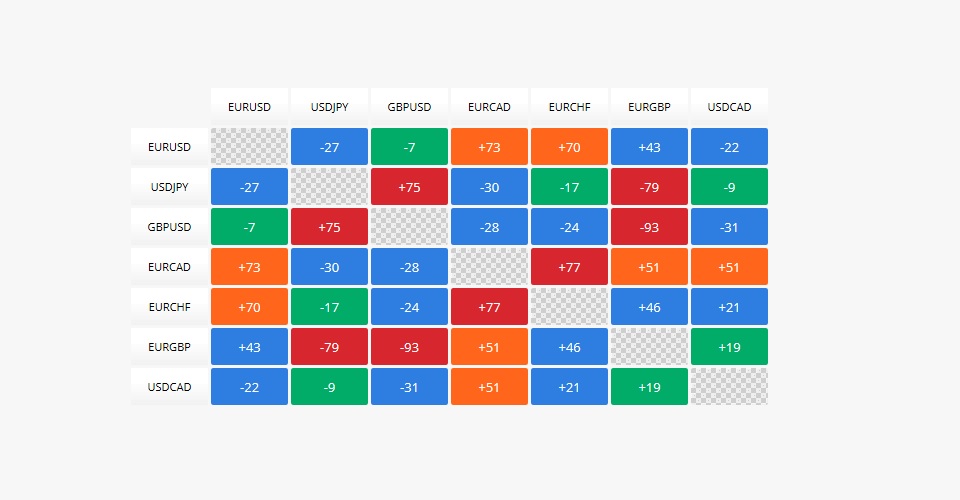Blog
What is Forex Correlation?

The term correlation is often mentioned in the world of financial trading, hence it is important to understand what it means. The word comes from the term ‘to correlate’ which suggests how one moves in relation to another, and in this case we are talking about assets. In the case of forex trading and currencies, correlation is thus the behaviour which currency pairs show as they move either in one direction or else, in different directions.
There are different types of correlations:
- A positive correlation is when a currency pair’s values move in the same direction simultaneously. For example, when the GBP/USD moves up, so does the EUR/USD.
- A negative correlation occurs when currencies trade in opposing directions. For example, the USD/CHF falls, and at the same time, the EUR/USD generally trades up.
- No correlation
The level of correlation is described in percentage figures, also known as the correlation coefficient. This can range from -100% to 100% and it is established by taking into account the historical performance. For instance, a -75% correlation means that according to analysis of historical market date, the particular assets moved in opposing directions at least 75% of the time. In case the correlation is 0, it means tha the asset prices are completed uncorrelated, and hence there is no noticeable effect on the price of an asset when a price movement occurs for another asset.
Some traders decide to try a correlation trading strategy. In such a case it is important to bear in mind that correlation between assets can be either strong or weak, over different times, and this relationship tends to shift over time.
Traders need to time their correlation-based trades carefully as there could be times when the relationship breaks down. this is why correlation is a very important type of technical analysis.
One can find various correlations between heavily traded currency pairs and commodities. For example, the CAD is correlated to the price of oil, as Canada is a major exporter of oil. Stock markets, gold, airline stocks, and large-cap mutual funds are some other assets to note.
Asset correlation is important for investors since it is best to have a combination of assets that have a low correlation if one want to reduce the volatility of his portfolio.
Good risk management also goes hand in hand with all this as it can reduce adverse effects that a trader can suffer when experiencing a loss. Having a strategy that leads to investment in positively correlated assets can help to capture small divergences in the particular asset pair. Should the correlation start to weaken, the trader will then need to carefully re-examine the situation and react accordingly and in a timely manner.
There are different types of correlations:
- A positive correlation is when a currency pair’s values move in the same direction simultaneously. For example, when the GBP/USD moves up, so does the EUR/USD.
- A negative correlation occurs when currencies trade in opposing directions. For example, the USD/CHF falls, and at the same time, the EUR/USD generally trades up.
- No correlation
The level of correlation is described in percentage figures, also known as the correlation coefficient. This can range from -100% to 100% and it is established by taking into account the historical performance. For instance, a -75% correlation means that according to analysis of historical market date, the particular assets moved in opposing directions at least 75% of the time. In case the correlation is 0, it means tha the asset prices are completed uncorrelated, and hence there is no noticeable effect on the price of an asset when a price movement occurs for another asset.
Some traders decide to try a correlation trading strategy. In such a case it is important to bear in mind that correlation between assets can be either strong or weak, over different times, and this relationship tends to shift over time.
Traders need to time their correlation-based trades carefully as there could be times when the relationship breaks down. this is why correlation is a very important type of technical analysis.
One can find various correlations between heavily traded currency pairs and commodities. For example, the CAD is correlated to the price of oil, as Canada is a major exporter of oil. Stock markets, gold, airline stocks, and large-cap mutual funds are some other assets to note.
Asset correlation is important for investors since it is best to have a combination of assets that have a low correlation if one want to reduce the volatility of his portfolio.
Good risk management also goes hand in hand with all this as it can reduce adverse effects that a trader can suffer when experiencing a loss. Having a strategy that leads to investment in positively correlated assets can help to capture small divergences in the particular asset pair. Should the correlation start to weaken, the trader will then need to carefully re-examine the situation and react accordingly and in a timely manner.